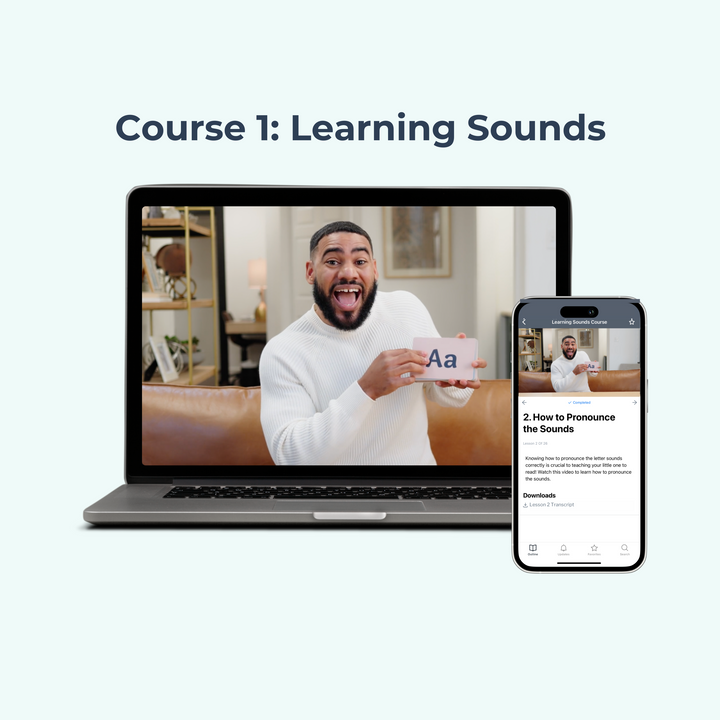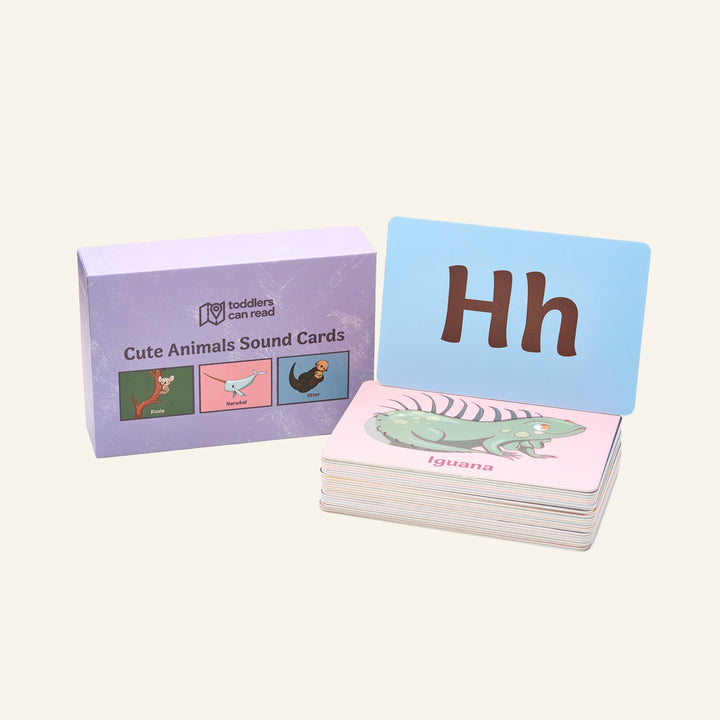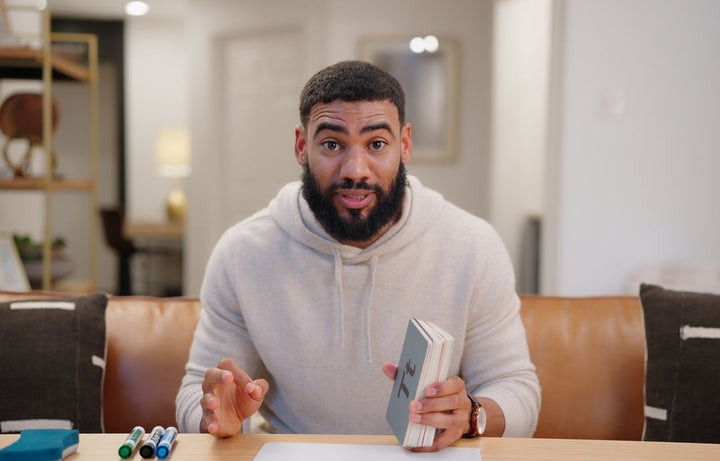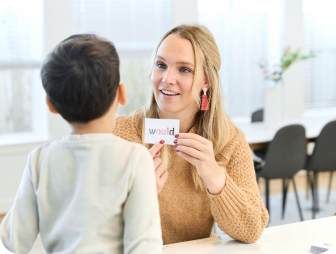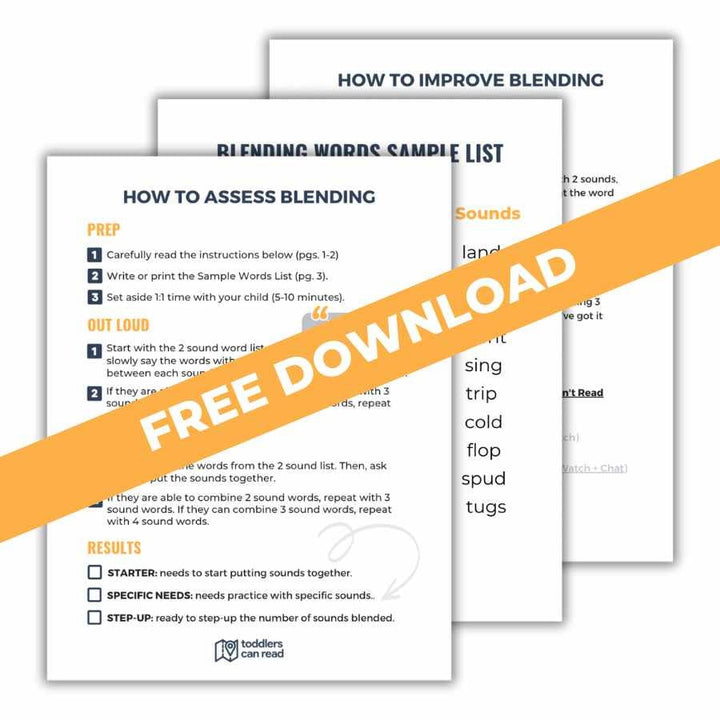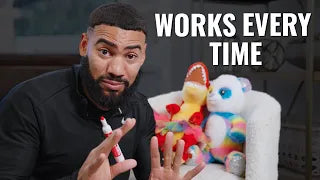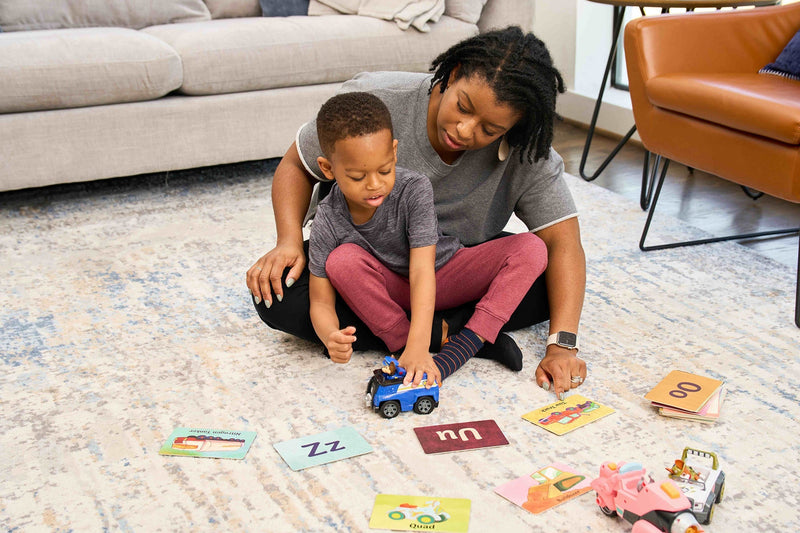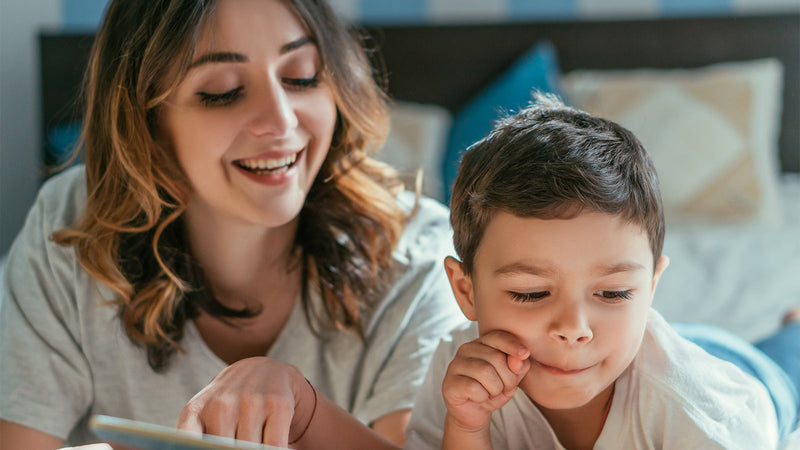The short answer to this frequently asked question is... no.
Now, a lot of you are probably thinking, "Seriously, Spence? This is so nit-picky! Everyone uses pictures. Why does it even matter?!"

There's probably some of you even thinking, "My child learned their letter sounds with pictures and they can read just fine!"
And if that's you, that's great news! I'm glad your child was able to learn their letter sounds, regardless of how they did it.
But for every one child who learns their sounds easily using pictures, there are many others who are struggling because they were taught this way. And I've seen it again and again after working with hundreds of children, which is why I think it's so important to avoid.
So if you're reading this blog post, you probably fall into one of three categories:
- You want to teach your kid their letter sounds and are trying to figure out the best way to do that. Maybe you remember learning the alphabet with pictures growing up, or have seen it in popular videos or songs. So you're wondering why in the world you wouldn't use pictures to teach your little one, too.
- You've already used pictures while teaching the letter sounds, but now your child is struggling and you want to know how to fix it.
- You used pictures to teach the letter sounds and your kid learned their letters "just fine", so you're curious about what you could have done differently.
No matter which category you fit in, my hope is that by the end of this blog post you'll have an answer to your questions and can make the best possible choices when teaching your little ones.
What's so bad about using pictures to teach letter sounds?
First things first: Using pictures isn't going to ruin your child's chances of learning the phonics sounds, even if it does create some problems for them down the road. But, if you want the fastest and easiest path to your child being able to read independently, it's probably not a great place to start.
That's because when it comes time to use the sounds to blend words, it could cause some serious confusion.
I saw this play out recently when I was working 1-on-1 with a 6-year-old on a blending lesson.
(See 2:41-2:51)
As you can see, instead of saying the /o/ sound and continuing to blend the word, he says "o... octopus" which stops him in his tracks.
If your little one says the letter sound and immediately follows it with a random word, it's going to make blending a lot harder.
This also makes it more difficult for us as parents and caregivers to tell where our little ones are at with their learning. If we only test them on their letter sound knowledge with a picture right next to the letter, we can't be sure what they'll actually know that letter sound once we take the picture away.
As with the child in this scenario, this can also lead to frustration. They've spent all this time learning to match a letter and a picture to a sound, but can't actually use that knowledge to blend together words the way they want to (because they say the name of the picture every time they say the sound.)
And if it turns out that they can't remember the sound at all without the picture, our little ones can become frustrated and lose confidence in themselves as readers.
What if they've already started learning with pictures?
If your little one has already started learning the sounds using pictures and you're noticing they're struggling to make progress, now is the time to take a step back and think about what might be getting in the way of their learning.
It's important not to jump to the conclusion that it's the pictures getting in the way of learning sounds, because honestly it could be a lot of things.
Maybe you're simply teaching too many letter sounds at once which is making it harder than it needs to be. You could be going in alphabetical order, and they've really just memorized the ABC song.
Or maybe the routine just isn't consistent yet and they're struggling to make it through the learning time. (I have a blog post to help with that too).
But if none of those things are the root of the problem and you suspect it is because they're relying on the pictures to help them, there's a simple solution:
Stop using the pictures.
That's it. Just take the pictures away.
It really is that easy. Don't just take my word for it; here's a testimonial from someone who implemented this change:


And if you're not sure what sounds they need to work on, assess their letter sound knowledge WITHOUT pictures.
But my kid learned their sounds with pictures just fine!
I hear you, and I do believe that many of us learned our sounds with the help of pictures and songs. But just because we eventually learned our letters correctly doesn't mean we couldn't have learned them faster and easier. Right?
Another reason I hear folks use to support using pictures is that kids need to learn how to hear the beginning sounds in words, and they believe pictures will support that. And I agree, learning how to identify a sound in a spoken word is important.
But, it's not necessary when they're first learning the sounds, and even if it was: attaching the same picture to the same sound every time certainly would not be the most effective way to teach that skill anyway.
This is because when we combine teaching letter sounds with hearing sounds in words, we're combining two skills at once:
- The auditory skill of being able to hear a sound in a word spoken aloud.
- The visual skill of connecting a written symbol to a sound.
And by mixing these two separate skills together, we're not teaching either skill very well.
If your reason for using pictures is that kids like pictures and they keep them engaged, I really do agree with you on that.
And we can still include pictures as an incentive during learning time, or to support their interests (e.g., your child is really interested in trucks, so you use sound flashcards with pictures of trucks).
The difference is putting pictures on the back of the cards (like we did with ours) so that they can still enjoy looking at a fun picture after they practice identifying the sound by itself.
Learning to read shouldn't be difficult!
If you want to learn how to teach the letter sounds, my Learning Sounds course will help you do just that.
Want to start teaching letter sounds but not sure which sounds your little one knows? This blog post on How to Assess the Letter Sounds can help.
And my hope is that my resources make that process easier for you and your little one, and that I can support you in being the best teacher you can be for them.
